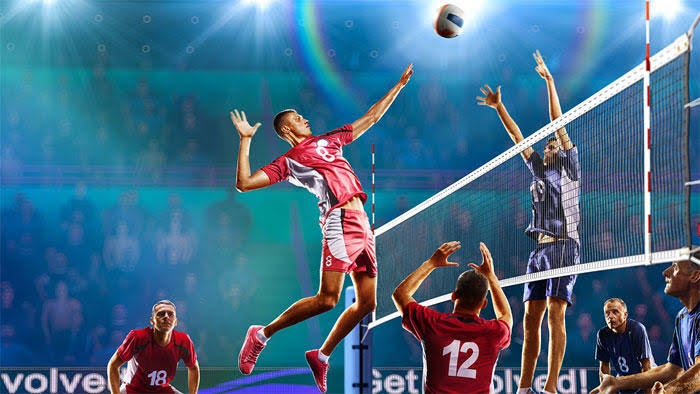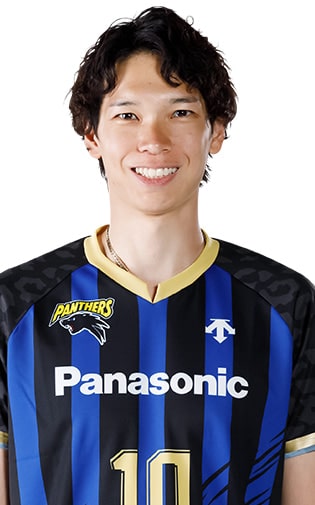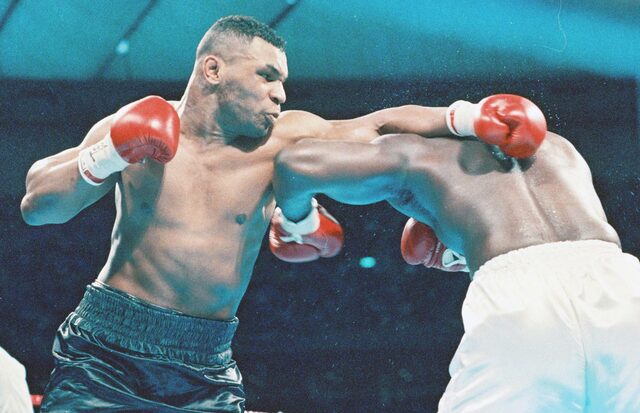
Kendo is a martial art that goes beyond mere technical mastery and requires deep spirituality and strategic thinking.
Among these, the “lower stance” is one of the techniques that particularly requires tactical depth and physical mastery.
This stance has unique advantages and difficulties compared to other Kendo stances, and mastering it is an important milestone for Kendo practitioners.
In this article, we will provide a wide range of explanations, from the historical background of lower stance to its specific form and how to utilize it in actual combat.
We also provide effective practice methods to master this kamee and advice from experienced kendo practitioners, helping you to deeply understand lower kamee as a kendo technique and apply it in actual practice and competitions. I will help you acquire knowledge.
We hope this article will be a useful guide for anyone learning Kendo.
目次
- 1 Introduction: Why is lower stance important?
- 2 Basics of lower stance
- 3 Advantages and disadvantages of lower stance
- 4 How to use lower stance in actual combat
- 5 Practice method to master lower stance
- 6 Advice and techniques for lower stances for advanced kendo players
- 7 Summary: Towards mastering the lower stance
Introduction: Why is lower stance important?
In Kendo, stance is a basic element that represents the swordsman’s tactics and psychological state.
Among these, the lower kamae holds a very important place in the study of kendo, as it offers certain tactical advantages and has its own historical background.
Historical background of lower stance
The lower stance, like many other stances in kendo, evolved from ancient martial arts.
In particular, the techniques that played an important role in the classical martial art of Iaido have evolved to the point where they can be incorporated into Kendo as well.
The lower stance has the effect of intimidating and putting psychological pressure on the enemy, and allows you to quickly turn into an attack from this stance.
With the use of this stance, emphasis was placed on tactics on the battlefield and techniques for controlling the opponent’s movements.
The tactical meaning of the lower stance
From a tactical standpoint, lower stances keep the tip of the sword low, making it easier to balance defense and counterattack while reducing the direct threat to the opponent.
From this stance, you can easily provoke your opponent’s attack, and quickly move on to counterattack while dodging the attack.
Additionally, the lower stance makes it difficult for the opponent to read your intentions, making it easier to execute surprise attacks and tactics that are rich in sudden changes.
In this way, lower stance provides a unique tactic in kendo that is both defensive and highly offensive.
In this section, we will explore various tactical choices in kendo and the psychological strategies behind them by deepening our understanding of lower stances.

Basics of lower stance
The lower stance in Kendo is a stance that requires a high degree of concentration both technically and mentally.
In this section, we will explain in detail the basic form of lower stance, as well as the correct posture and hand position.
Basic form of lower stance
In the lower stance, the tip of the sword is kept clearly lower than the opponent’s line of sight.
The main feature of this stance is that the tip of the sword is positioned at or below knee height.
This position makes it easier to attack the opponent’s kote and face while solidifying the defense.
The lower stance also has the effect of minimizing the exposure of the front of the body, reducing the number of targets for attack.
Specifically, your feet should be approximately shoulder-width apart, with your left foot slightly in front of you, and your weight evenly distributed between both feet. Ideally, your body should not lean forward, your back should be kept straight, and your knees should be bent naturally.
Correct posture and hand position
Correct posture in lower stance is very important for improving overall balance and reaction speed.
Keep your back straight and your face facing forward, but your gaze will often naturally be directed downwards.
This is because the point of the sword is in a low position, which naturally lowers the viewpoint. Hand position: Hold your left hand in front of your body, roughly in front of your abdomen.
The right hand should be slightly lowered and the Shinai should be firmly gripped, but it should be kept in a relaxed state without excessive force.
This stance and hand position allows attacks from the lower stance to be performed quickly and accurately, while at the same time providing an excellent defensive position against the opponent’s attacks.
By properly mastering this stance, you will greatly improve your technical breadth and tactical depth in Kendo.

Advantages and disadvantages of lower stance
The lower stance occupies a unique tactical position in kendo.
Understanding the unique benefits of this stance, as well as its associated disadvantages, is important in the practice and practice of Kendo techniques.
Tactical advantages of lower stance
The biggest advantage of the lower stance is that it provides a good balance between defense and attack.
In this stance, the tip of the sword is low, making it easier to attract the opponent’s attack, making it easier to aim and shoot at the moment when the opponent is defenseless.
Additionally, from the lower stance, you can effectively apply pressure on your opponent, giving you the psychological advantage of restricting your opponent’s movements.
Furthermore, since the tip of the sword is low, it is easy to see through the opponent’s attack and lead to a quick counterattack.
Precautions when using lower stance
On the other hand, the lower stance also has some disadvantages. The main points to note are as follows.
- Depleting physical strength : Lower stances keep the body low, which puts a lot of strain on the muscles, especially the thighs. If you maintain this stance for a long time, your physical strength will be exhausted easily, and fatigue will accumulate.
- Limited attacks : Attacks from the lower stance are powerful, but attack variations may be limited. In particular, compared to Jodan stance, there are fewer types of Uchi techniques, so the disadvantage is that it is easier to predict.
- Delay in action : Due to the low tip of the sword, it may take a little longer to attack high points such as masks. Therefore, it may be at a disadvantage in situations where instantaneous speed is required.
Understanding these advantages and disadvantages and utilizing lower stances in appropriate situations will lead to improved kendo techniques.
By using different stances depending on the situation, you can develop a more tactical kendo style.

How to use lower stance in actual combat
Lower stances offer certain advantages in Kendo tactics, but it is important to understand and apply how to use them effectively.
In this section, we will discuss how to use lower stance in actual combat and compare it with other stances.
Effective usage in actual combat
The lower stance can be used tactically in actual combat as follows:
- Invite your opponent to attack : The lower stance appears to be a less aggressive posture, making your opponent think you are giving them an opportunity to attack. Use this to your advantage and quickly counterattack the moment your opponent launches an attack.
- Gives a feeling of psychological pressure : Keeping the tip of the sword low can give the opponent a sense of anxiety. Using this psychological pressure, you can disrupt your opponent’s concentration and invite them to make mistakes.
- Adjusting the sense of distance : The lower stance has a low sword tip, making it easy to adjust the sense of distance and maintain an effective striking distance while avoiding the opponent’s attacks.
Comparative analysis with other stances
Comparisons between the lower stance and the other major stances (upper and middle) are notable for the following points:
- Attack speed : In upper and middle stances, the tip of the sword attacks directly from a high position, so the strikes to the men and kote are fast and direct. On the other hand, since the lower stance has a lower tip, the movement required to attack is longer, and there may be a slight delay.
- Ease of defense : Since the body is low in the lower stance, it is naturally easier to take a defensive stance, and it has particularly strong defensive power against thrusts from the lower stage and blows to the abdomen.
- Consuming physical strength : The lower stance requires a large amount of physical strength as it keeps the body low, which may be a disadvantage in long-term battles.
These comparisons provide an important indicator when deciding which stance to choose for Kendo practice or competition.
Each stance has its own unique characteristics, and understanding and utilizing them is the key to developing tactical kendo.

Practice method to master lower stance
Lower stance is one of the important techniques that demonstrate mastery in Kendo, and mastering it requires a specific practice method and continuous practice.
In this section, we will introduce how to practice lower stance stance in daily practice, as well as supplementary exercises to enhance its effectiveness.
How to practice lower stance in daily practice
The following exercises are useful for learning lower stance:
-
Basic form practice :
- Take a lower stance in front of a mirror and check the correct posture and position of the tip of the sword. This allows you to self-correct with visual feedback.
-
Movement practice :
- Keep moving forward and backward while maintaining the lower stance, so that you can move without losing your stance. It is especially important to keep the tip of the sword stable when moving forward.
-
Tip control practice :
- Practice keeping the tip of the sword accurately aimed at the target. This helps increase the accuracy of your attacks on your opponent’s kote and men.
Supplementary exercises to increase effectiveness
To further enhance the effectiveness of lower stance, the following supplementary exercises are recommended:
-
strength training :
- In order to maintain a lower stance for a long period of time, it is necessary to strengthen the lower body in particular. Incorporate exercises like squats and lunges to build leg strength and endurance.
-
Increased flexibility :
- The lower stance also requires flexibility of the body. In particular, do stretching exercises on a daily basis to increase the flexibility of your hips and knees, and improve the stability of your stance.
-
Reaction speed training :
- We will train you to develop your explosive power in order to quickly react to your opponent’s movements. Short-distance sprints and drills that require reaction time are effective for this.
Through these practice methods, you will be able to learn lower stances in Kendo and improve your ability to apply them in actual combat.
By incorporating these elements into your daily practice, you will improve your technique and deepen your understanding of Kendo.

Advice and techniques for lower stances for advanced kendo players
As you progress in your Kendo practice, as you become an advanced player, even more precise techniques and tactics are required.
In particular, lower stances require a deep understanding and skill that only advanced players can achieve, so advice from experienced kendo practitioners and practical techniques are extremely helpful.
Specific advice from experienced Kendo practitioners
-
Always predict your opponent’s movements :
- In the lower stance, it is very important to read the opponent in advance. It is necessary to anticipate the opponent’s attack intentions and prepare a response accordingly.
-
Maintain stability in stance :
- In the lower stance, the stability of the stance is the key. It’s important to stay calm and be ready to move by distributing your weight evenly between your feet.
-
Master the control of the tip of the sword :
- When attacking from the bottom, controlling the tip of the sword is crucial. It is recommended that you always keep the tip of your sword in a position that is effective against your opponent and try to keep your opponent on guard.
Practical techniques using lower stances
-
A quick blow to the kote :
- From the lower stance, attacks that aim at the opponent’s kote are effective. At the moment when the opponent launches an attack, perform a quick strike against the kote to restrict the opponent’s movement.
-
Utilize foot skills :
- The lower stance is compatible with foot techniques, so you can use foot sweeps and thrusts to throw your opponent off balance. This draws your opponent’s attention to your feet and creates an opportunity to attack your upper body.
-
Counter attack practice :
- Counter attacks from the lower stance are very effective. It is important to hone the technique of luring the opponent’s attack, dodging the attack, and immediately counterattacking.
By incorporating these tips and techniques into your practice, you will be able to gain a deeper understanding of lower dan kame as a kendo technique and increase your ability to apply it in actual combat.
The key to further developing Kendo as an advanced practitioner is to always consider the distance from the opponent and approach training with tactical thinking.

Summary: Towards mastering the lower stance
Lower stance is an important element that contributes to technical improvement and personal growth in Kendo.
Creating a practice plan to master this kamee and setting goals for long-term skill improvement are essential to your development as a kendoist.
Here we detail practical practice planning and goal-setting methods.
Planning a practice plan
When developing a practice plan to master lower stance stance, the following steps can be helpful:
-
Specific details of daily practice :
- Decide what you want to focus on during your daily practice sessions and create a specific practice menu. For example, you might practice the form of lower stance stance several times a week, and incorporate movement practice or reaction speed drills on other days.
-
Regular reviews and adjustments :
- Regularly review your practice progress and adjust your plan as necessary. It is important to incorporate feedback from Kendo instructors and seniors and continually improve the quality of your practice content.
Goal setting for long-term skill improvement
In order to improve your skills, you need to set clear goals. Effective goal setting is recommended to include the following points:
-
Goal setting based on SMART principles :
- Set goals that are specific , measurable , achievable , relevant , and time- bound . For example, you might say, “I will master the technique of counterattacking from lower stances in the next three months.”
-
Setting long-term and short-term goals :
- Set long-term goals (e.g., winning a Kendo tournament using lower kamee within a year) and short-term goals to achieve them (e.g., identifying areas for improvement during monthly technical evaluations). clear, etc.).
By making a practice plan and setting goals like this, you will be able to steadily improve your kendo techniques toward mastering lower-level stances, and you will be able to acquire practical fighting ability at a higher level.
The Kendo journey is a process of continuous learning and self-transcendence.




